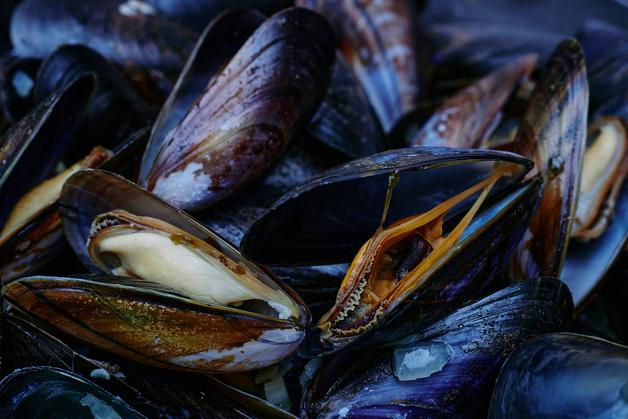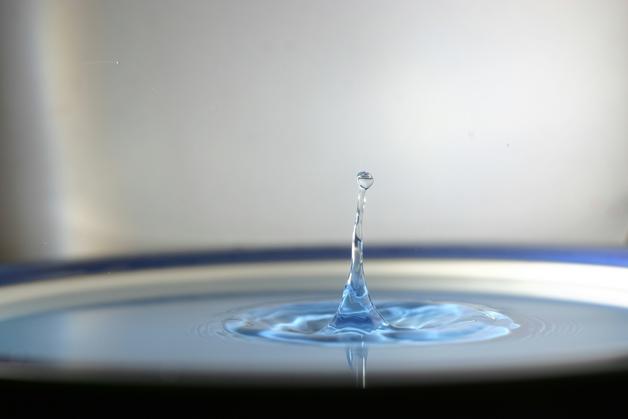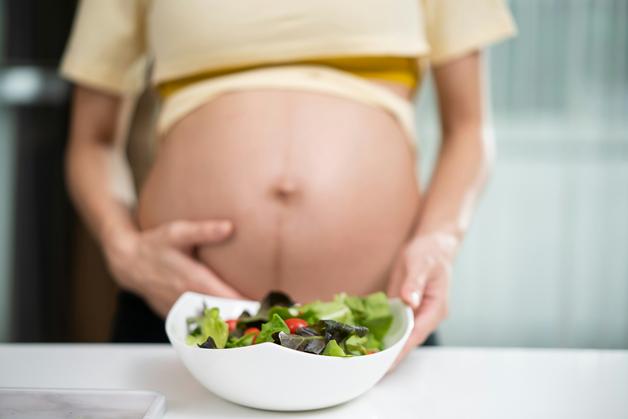When the topic of seafood pregnancy arises, a flurry of questions swirls in the mind. Is it safe to indulge those cravings for shrimp curry or savour family fish recipes, or should caution dominate the menu? Deciding what to eat takes on new weight. Nutrition becomes a daily calculation, yet, so does the desire to keep every mouthful both enjoyable and beneficial for mother and baby. Balancing taste and safety can feel like a delicate dance, especially given conflicting advice and the barrage of opinions that accompany pregnancy. Concerns over nutrition, mercury, infections, and allergy risks—they all stack up. But is giving up on the sea’s bounty the answer, or is there a balanced way forward? Here, the puzzle of seafood pregnancy is unpacked: nutritional gains, wise precautions, and clear boundaries—each point demystified so every parent can approach the dinner table confidently.
The Hidden Power of Seafood: Vital Nutrients for Both Mother and Baby
Step back and look at the science—seafood pregnancy is not just about taste, it is an important nutritional decision. Each bite of well-chosen, carefully cooked seafood delivers a treasure trove: omega-3 fatty acids (especially DHA and EPA), high-quality proteins, vitamin D, iodine, vitamin B12, and iron. Ever wondered why doctors highlight omega-3s? These vital lipids serve as the building blocks for your baby’s developing brain and eyes. Think of DHA and EPA as supporters for neuron connections, involved in cognitive functions later in life.
Protein supports growth of every tissue—muscles, skin, even the placenta. The body’s need soars during this period, and seafood pregnancy offers a readily digestible option. Then there’s iodine—playing a part in thyroid balance, so essential for the foetal nervous system. Deficiency here is not something to ignore; it can affect IQ and the entire brain development process.
Iron and B12 are not just about getting more energy. Anaemia during seafood pregnancy can mean higher risk of birth complications, but seafood—especially shellfish—delivers bioavailable forms, easily absorbed by the body. Selenium combats oxidative stress, functioning as a mini shield for maternal and foetal cells alike. With all these on the plate, it’s no surprise health professionals call seafood a nutritional powerhouse, if—and only if—selected wisely.
Striking the Right Balance: Medical Recommendations and Safety Habits
Uncertainty often revolves around how much is just right. Too little? Benefits slip away. Too much? Worries about mercury and hidden microbes surface. For most, aiming for 2–3 servings (225–340 grams) of low-mercury, well-cooked seafood weekly during pregnancy is an evidence-backed sweet spot.
Selecting the right types takes centre stage. Prioritise low-mercury species—think salmon, prawns, sardines, catfish, carp, tilapia, cod, and canned light tuna (never more than one small can per week). For the adventurous, mussels, clams, and crab—if cooked thoroughly and bought from trusted sources—are nutritious and flavourful options. Food safety cannot be compromised: always cook seafood to an internal temperature of at least 74°C (165°F)—flesh should become opaque and firm, while shellfish must open their shells. Any seafood that doesn’t pass this visual test is best discarded.
Be aware of what to skip: high-mercury fish such as swordfish, king mackerel, shark, marlin, and tilefish—these predatory fish can carry mercury that crosses the placental barrier, possibly impacting your baby’s brain and nervous system. Raw or undercooked fish, shellfish, sushi, tartares—tempting as they are—pose bacterial and parasitic risks (especially listeriosis) best avoided during seafood pregnancy.
Seafood Choices: What Gets a Green Light—And What Needs a Red Flag
The variety from the sea is impressive, but discernment is your best ally in seafood pregnancy. Let’s break it down:
Seafood to include:
- Salmon, sardine, trout & mackerel (baked or grilled)
- Well-cooked prawns, crab, lobster
- Mussels, clams, scallops (thoroughly heated)
- Tilapia, cod, pollock, whiting, sole
- Canned light tuna in moderation
Seafood to avoid:
- Shark, swordfish, king mackerel, marlin, tilefish (high-mercury)
- Raw or undercooked sushi, sashimi, tartare
- Non-pasteurised or cold-smoked fish (unreliable hygiene and listeria risk)
- Unpasteurised fish roe or caviar
Seafood pregnancy sometimes means skipping favourite sushi rolls, but it opens doors to safe alternatives, like sushi made with cooked ingredients or vegetable rolls.
Understanding the Risks: Mercury, Bacteria, and Everyday Safety
It’s not scaremongering—there are real reasons behind the boundaries set for seafood pregnancy. Mercury toxicity, though rare, can affect neural development with symptoms that may go unnoticed in the beginning but have lasting effects if exposure is chronic. Likewise, listeria—often found in raw seafood or poorly handled cooked options—tends to cause nothing more than mild illness in most adults. However, during pregnancy, it can pass through the placental barrier, leading to miscarriage, premature birth or neonatal complications.
Bacterial foes like salmonella and parasites (toxoplasma) rarely withstand proper cooking. So hygiene in the kitchen matters more than ever—wash hands, clean cutting boards, use separate utensils for raw and cooked seafood, and refrigerate promptly.
Cooking Made Safe, Tasty, and Simple
Feeling worried about getting it right? Reassuringly, the safest way to transform seafood into a delicious, reliable part of pregnancy nutrition is through thorough cooking and prompt consumption. Bake, grill, steam, or pan-fry—always aiming for that magic number: internal temperature of 74°C (165°F). Keep things practical: buy from reputable sources, use or freeze within 1–2 days, never refreeze after thawing. Always check for changes in smell or texture—if in doubt, better to discard than to risk.
Avoid homemade mayonnaise with raw egg, but commercial, pasteurised versions are fine if you crave a creamy finish. Swap in fresh herbs and a dash of lemon for that colour and tang, keeping your meals safe and palate-happy.
Meal Ideas and Pairings: Enjoyment Meets Nutrition
Building the basis of a balanced seafood pregnancy meal plan can be enjoyable, colourful and varied. Mix grilled salmon with brown rice and sautéed greens, try prawn stir-fry with bell pepper, or experiment with fish curry using safe white fish. For a dash of tradition, coconut fish stew marries taste with safety beautifully—just ensure full cooking.
Fuse in side dishes: whole grain breads, lentil soups, or roasted seasonal vegetables. Mixing dietary protein sources boosts nutritional coverage and keeps your taste buds engaged. The possibilities? Limitless.
Alternatives When Seafood Isn’t an Option
Some expectant parents may steer clear of all seafood—whether due to personal taste, allergies, or ethical reasons. No need to fret: plant sources step up as secondary options for seafood pregnancy nutrition goals. Flaxseed, canola oil, walnuts supply alpha-linolenic acid (ALA)—a precursor for omega-3s, though conversion to DHA/EPA is less efficient. Interested in supplements? Algae-based omega-3 capsules provide DHA and EPA, but always seek medical advice first.
Proteins can be derived from well-cooked legumes, lentils, paneer, tofu or fully boiled eggs (no runny yolks). Keep in touch with your doctor or a registered dietitian to ensure every nutritional box is ticked.
Everyday Practices and Smart Shopping: Confidence on Your Plate
Safe and scrumptious seafood pregnancy meals begin at the marketplace. Buy from reputable vendors—look for clean counters, proper refrigeration, and clear labels with expiry dates. Fish should smell fresh, not fishy, and shellfish should be purchased alive and cooked promptly.
Home storage and preparation matter greatly. Store seafood in the coldest part of the fridge and use quickly. Keep raw and cooked food separate, clean utensils thoroughly, and avoid cross-contamination. Prefer local, responsibly sourced options—they’re often fresher and may contain fewer contaminants.
When to Seek Medical Guidance
If you encounter hives, swelling, difficulty in breathing or upset stomach following seafood, reach out to your healthcare provider promptly. Suspicious symptoms, such as muscle weakness, vision changes (possible signs of mercury toxicity), or fever and severe stomach pain (potential infection), deserve medical attention. A proactive approach reassures and ensures your and your baby’s safety during seafood pregnancy.
Key Takeaways
- Multiple nutrient benefits from seafood pregnancy—omega-3s, proteins, iodine, vitamin D—when consumed safely and in moderation.
- Opt for low-mercury fish, and never skip full cooking.
- Hygiene and proper storage are practical tools against infection and spoilage.
- Well-considered plant and supplement alternatives exist for those avoiding seafood.
- Medical professionals and tools like the application Heloa offer personalised guidance and free child health questionnaires—ideal allies on your parenthood journey.
Questions Parents Ask
Can I eat sushi or raw seafood while pregnant?
Yearning for sushi or raw shellfish is not uncommon during pregnancy. However, raw or undercooked seafood poses greater risk of infection—like listeria or salmonella—which may be more severe in pregnancy. Best to favour cooked sushi rolls or dishes where seafood and shellfish are fully cooked. A tasty compromise, and you sidestep added risk.
How much seafood is safe to eat each week when expecting?
The sweet spot lies at 2–3 servings (around 225–340 grams) of low-mercury seafood per week during pregnancy. This supports nutritional needs, especially omega-3 intake, without excess mercury exposure. Choosing different types in rotation adds dietary diversity and reduces risk.
What should I do if I accidentally ate high-mercury fish?
Mistakes can happen—even during seafood pregnancy. One accidental serving rarely poses threat to baby’s health. Pause, monitor for any symptoms, and consult your doctor if you’re worried or if consumption was frequent. Often, reassurance and a plan for choosing safer options moving forward is all that’s needed.
Further reading :









